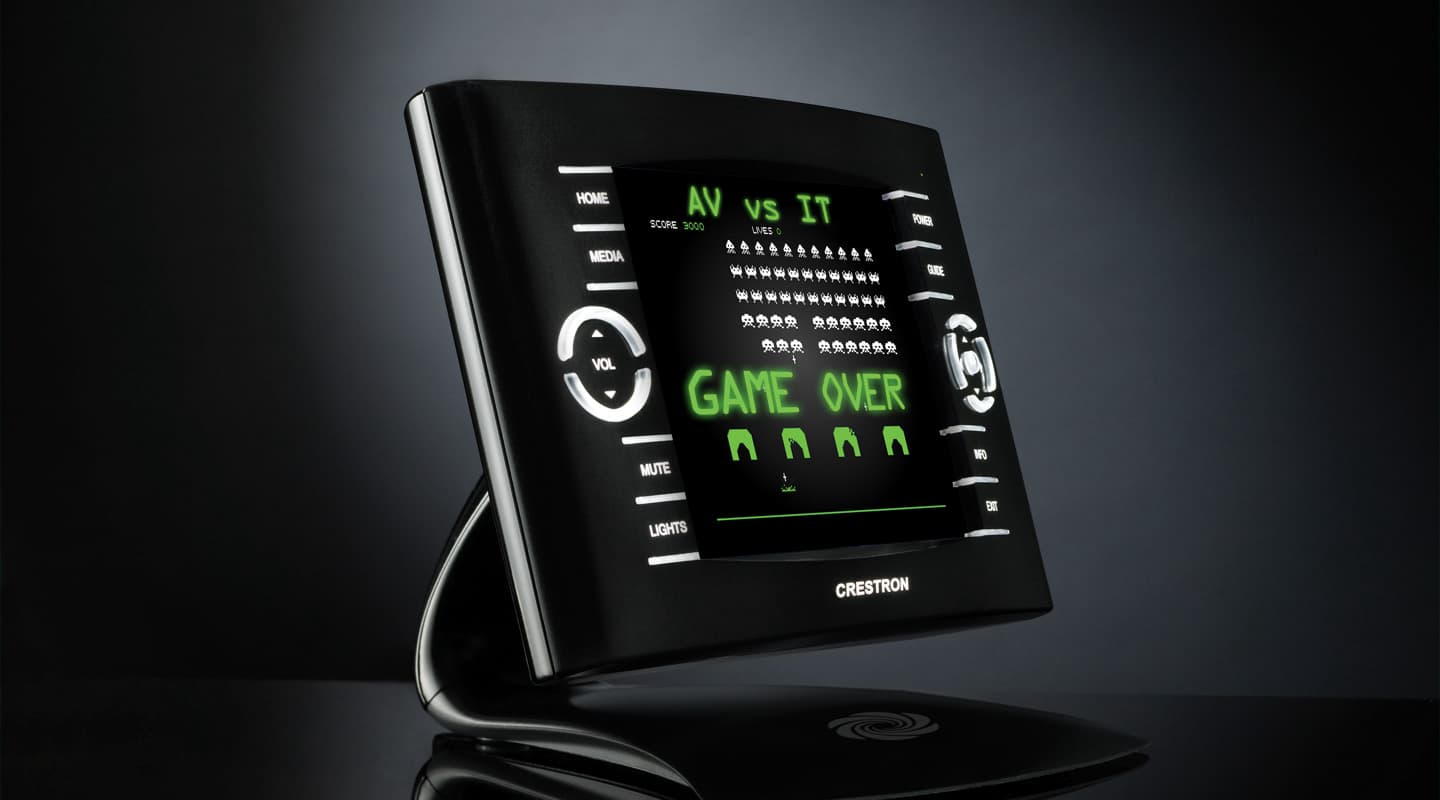
AV? No We’re IT
A senior Crestron executive talks about the company’s present and future directions.
Text:/ Tim Stackpool
While American Randy Klein is recognised as a driving force behind the success of Crestron’s AV control systems, his 35 years in the business also makes him a source of much knowledge when it comes to trends, success and failures in the industry. He’s a firm believer that changes in AV have led the industry towards being firmly attached to the IT world. We caught up with Randy on a recent trip to this part of the world.
“I’m a big proponent of changing the name of our industry from ‘The AV Industry’ to ‘The IT Industry’. We are the IT industry,” says Klein. “Think about it: Audio is information, Video is information, Lighting is information, Environment is information, and, most importantly, Media is information and the AV industry is part of and owns that Information Technology today.”
Being the Executive Vice President and Chief Operating Officer, Randy is responsible for directing Crestron operations, strategies and initiatives worldwide. Based at company headquarters in Rockleigh, New Jersey, Klein manages the 57 Crestron offices and facilities throughout the Americas, Europe, Asia and Australia that serve over 90 countries. Klein has played a key role in developing Crestron from a $1m company 20 years ago to the $450m company it is today. During his 35 years in the AV industry, he has gained a wealth of experience from both a dealer and manufacturing perspective, developing a keen insight into the industry, its technology issues and solutions.
Klein has seen the world of AV change extensively over the years and is positive about its future: “When I started, there were certainly no computers, there was no internet, there was not even any video,” he said. “I say every day that we are part of by far the coolest industry on the planet. If you look around, the hotel business, the transportation business or the retail business, there isn’t one industry around that is really thriving; there isn’t one industry around where people go around and say, ‘Gee I love my job, I love this industry,’. But there is one exception, and that is the industry that we are in. It’s cool technology.”
AV AS AN ENABLING TECHNOLOGY
Klein believes that AV is an integral aspect of so many businesses. “It’s needed technology. People in everyday commerce need our industry to run their business. They have to have meetings, they have to collaborate, they have to communicate, they have to share information, and data, and, as such, our industry is needed,” he said.
Crestron enjoys a broad market base, with around 50% of its business coming from commercial clients, and the other half coming from consumer installations. Here, Klein identifies a difference between the needs of the professional, versus the domestic market. “When it comes to the lifestyle and entertainment business, people don’t really need it. But when changing economies mean that people stop going out to lavish dinners and lavish vacations, they stay home and they entertain themselves. That has been a tremendous advantage in our industry over others.”
Looking ahead, Randy Klein takes pride in being instrumental in the modern integration of separate AV components found in a typical installation. “The AV industry as we knew it yesterday was a matter of walking into a room, connecting a control system to different devices, integrating it and calling it ‘a system’. That was great, but that system still operated as a single room. It wasn’t connected to the room next to it, and the two rooms weren’t connected to all the rooms in the building, and those rooms weren’t connected to another building across the street or across the world. The advent of the internet allowed us to interconnect these buildings and these rooms without digging ditches or pulling wires, however it was still just an AV component. What Creston has done and what has fuelled our growth is beyond merely building touch panels and control systems. It has been developing the technology for all of the AV systems in the entire building.”
NO INSTALLATION IS AN ISLAND
Out of this, Crestron devised a number of new technologies to assist in making the interconnection possible, some of which have now become industry recognised. “A significant innovation has been our development of a transport medium called QuickMedia, which carries audio, video and control over a single Cat5 cable,” Klein explains. “Today QuickMedia is a standard. It’s not just a proprietary development made by Crestron, it is a standard and it is used worldwide by many, many people. So as we go about developing this technology, the next thing we have to do is connect all these buildings together, and connecting all these buildings together is accomplished by a wonderful product called RoomView. RoomView today is the premier software platform that connects all of the rooms in all of the buildings together, intra and inter world-wide.”
The RoomView concept is to connect every device, in every room, in every building across the world, so that all devices can interoperate. Irrespective of whether the device is a light bulb or a projector, all can be monitored, managed and scheduled from a single location. As Klein describes: “Today, companies like Microsoft, for example, have thousands of rooms across the world. We connect every one of those rooms using our technology, not only from an AV standpoint, but from lighting through to media.”
This means, of course, that the typical installer today is not just running a wire up to a projector or an amplifier. The installer today must be network savvy. Further to this Klein believes the modern installer must be more than computer literate: “Much of our digital media product line will run on fibre. So our industry has to learn fibre practices, such as how to run it, how to terminate it and how to design fibre networks. These are all new skill sets and practices that our industry has to learn, acquire and master. There is no other industry out there today that has the background, the experience and the enthusiasm to push this initiative forward.”
AV IN IT
The attention Crestron now receives from the major IT players dates back to their initial projects with Microsoft. “Back then, Microsoft was no different to anybody else.” said Klein. “They had a bunch of disparate AV equipment from many different manufacturers in many of their conference and meeting rooms across the world. They had a tremendous need to put them together so that they could manage and monitor these rooms. And most importantly they wanted to schedule the rooms. They first tried to use their own internal resources within their network to do it; obviously they’re the best at that. But they came to our industry for help, and we were lucky enough to secure the business. And as a result, Crestron has become a standard in many of the Microsoft platforms around the world. After which, we became a partner in developing worldwide standards with Cisco and Adobe, and so on.”
Given the obvious diversity now enjoyed by the AV industry, Randy Klein is positive about the future. “I won’t predict, I’ll tell you what we’re going to do,” he says. “Anyone who can predict the future is either very lucky or feeding you a big line. But I know one thing: In five years time, and in 20 years time, Crestron will be in business. We have always been able to adapt, we’ve always been flexible and dynamic and we’ve always been committed. As a result of having the vision, the resources; having the guts and having some luck, we continue to grow our business year after year.”
And he’s been around long enough to know.



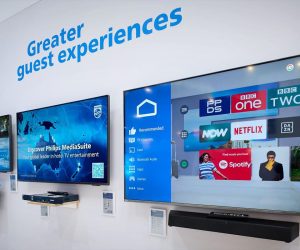




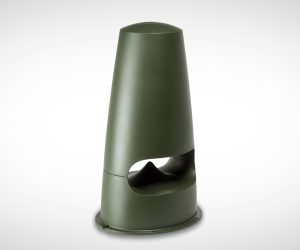
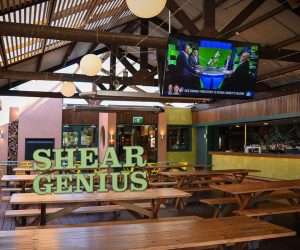
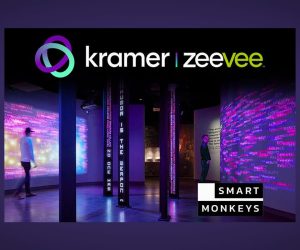




RESPONSES